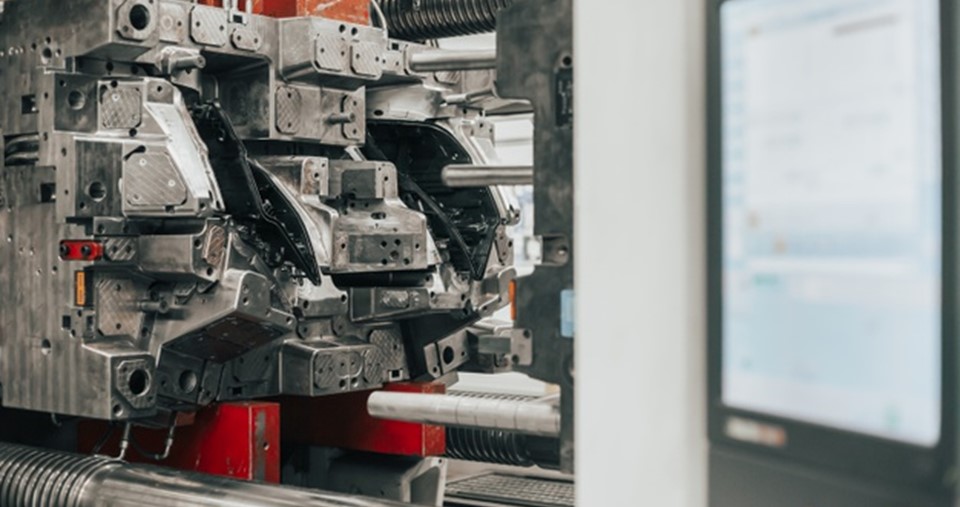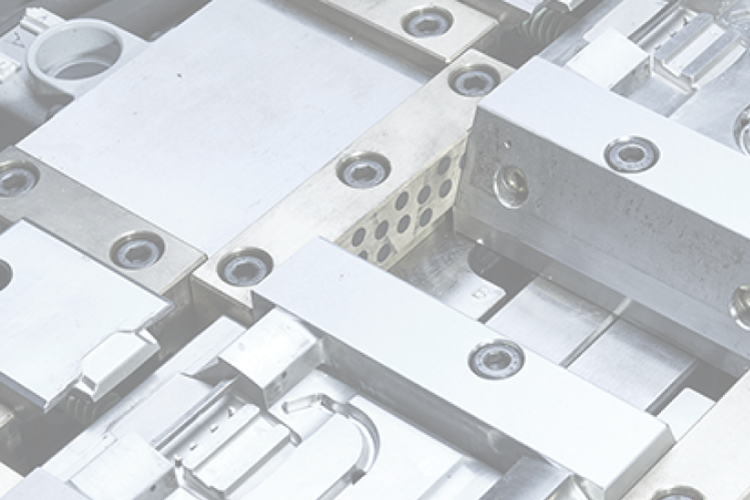Polycarbonate Injection Moulding
Discover everything you need to know about polycarbonate injection moulding: a versatile manufacturing process ideal for producing strong, transparent, and high-quality plastic components.
In this comprehensive guide, we explore the characteristics of the material, the advantages of injection moulding, and its applications across key industries.

What is Polycarbonate Injection Moulding?
Polycarbonate is one of the most versatile thermoplastics, and its full potential is best realized through polymer injection moulding—specifically, the high-precision process of polycarbonate injection moulding, which combines speed, consistency, and excellent surface finishes for demanding applications.
The process involves injecting molten material into a closed mould, where it cools to form the final part. This technology ensures high precision, repeatability, and excellent surface finishes.
Properties of Polycarbonate
Polycarbonate’s popularity stems from its unique physical and chemical properties, combining lightness, strength, and transparency. As an amorphous material with no crystalline structure, it’s particularly suitable for optical applications due to its high light transmittance.
It offers outstanding impact resistance—up to 250 times stronger than glass—and maintains its mechanical performance across a broad temperature range, from -40°C to +135°C. It can also be made flame-retardant and UV-resistant with specific additives. Its compatibility with sterilization processes makes it ideal for medical applications.
|
Property |
Typical Value |
|
Impact Resistance |
Up to 250x stronger than glass |
|
Flame Retardancy |
UL94 V-0 (with additives) |
|
Operating Temperature |
-40°C to +135°C |
|
Transparency |
> 88% light transmission |
|
Sterilizable |
Yes (steam, ethylene oxide, irradiation) |
Contact Idea Stampi!
Advantages of Injection Moulding with Polycarbonate
To fully benefit from polycarbonate's properties, it must be processed using an optimized production method. Injection moulding is the most effective solution, maximizing both material and process efficiency.
This technique is based on an automated production cycle, ideal for high-volume manufacturing with reduced lead times. The use of high-precision steel moulds ensures tight tolerances, enabling perfect part interchangeability even in large-scale production. Furthermore, the moulded part surface can be extremely smooth, enhancing perceived quality—especially in optical or visible components.
Key Benefits:
- Fast production cycles: shorter times due to automation and fast polycarbonate cooling
- Reduced unit costs: ideal for medium to large production runs with minimal waste
- High dimensional accuracy: tolerances up to ±0.1 mm, perfect for mechanical fittings
- Excellent repeatability: enabled by rigid moulds and controlled process parameters
- Superior aesthetics: glossy surfaces free from visual defects, replicating the mould perfectly
- Design flexibility: enables inserts, thin walls, and complex geometries
These advantages make polycarbonate injection moulding a benchmark technology for applications requiring both technical performance and visual quality.
Key Industrial Applications
Polycarbonate is widely used across numerous industries thanks to its unique blend of strength, lightness, and transparency. Its ability to form complex parts with high precision and finish makes it perfect for applications demanding both mechanical and aesthetic excellence.
|
Industry |
Example Applications |
|
Medical |
Syringes, incubators, transparent containers |
|
Optics |
Visors, eyewear, lighting lenses |
|
Automotive |
Headlights, dashboards, impact-resistant covers |
|
Electronics |
LED housings, translucent panels |
|
Food-grade |
Washable parts, heat-resistant and food-safe components |
Thanks to these applications, polycarbonate injection moulding stands out as a highly effective solution for demanding production environments.
Contact usAdvanced Moulding Techniques for Polycarbonate
To meet the growing complexity and performance demands of modern plastic components, several advanced moulding techniques have been developed specifically for polycarbonate. These methods are designed to overcome common limitations in traditional injection moulding—such as surface imperfections, stress concentration, or uneven wall thickness—and to optimize the final part for function, form, and durability.
- One of the most widely used techniques is RH&C (Rapid Heating & Cooling), which allows dynamic control of the mould temperature during the injection cycle. By rapidly heating the mould before injection and cooling it immediately after, this method significantly improves the surface finish, eliminates weld lines, and enhances the transparency of optical-grade components.
- Another valuable technology is Water-Assisted Injection Moulding, particularly useful for producing hollow or tubular parts with uniform wall thickness. This process uses high-pressure water to displace the polymer core, creating lightweight structures without compromising mechanical integrity.
- Compression Moulding, though less common in high-volume production, is ideal for reducing internal stress and eliminating sink marks in thick-walled parts. It involves partially filling the mould with resin and then compressing it under pressure to reach the final shape, enabling better material distribution.
- Overmoulding enables the combination of multiple materials—such as rigid polycarbonate and soft-touch elastomers—or the integration of inserts, such as metal connectors or electronic components. This technique is increasingly adopted in electronics and consumer goods to improve ergonomics, functionality, and design.
Choosing the right advanced moulding technique depends on the part's geometry, end-use requirements, and production scale. When correctly applied, these technologies provide a strategic advantage in terms of product quality, performance, and production efficiency.

Technical Challenges and Best Practices
Although polycarbonate is an outstanding material, its processing demands precision and expertise. Achieving optimal results requires strict control of several key parameters throughout the injection moulding cycle. Improper handling—especially related to moisture content, processing temperatures, or mould design—can lead to visual defects, dimensional inconsistencies, or compromised mechanical integrity.
Understanding these challenges is critical for maintaining high-quality output and reducing waste. Common issues include moisture in the material, which requires pre-drying to levels below 0.02%, thermal degradation caused by excessive temperatures, and flash resulting from improper mould closure or pressure imbalance. Weld lines can be addressed with optimized flow design or RH&C technology, while sink marks on thick parts are best mitigated through controlled compression during cooling.
|
Challenge |
Recommended Solution |
|
Moisture in material |
Proper drying (< 0.02%) |
|
Thermal degradation |
Accurate temperature control |
|
Flash |
Adjust pressure and ensure proper mould closure |
|
Weld lines |
Use RH&C or redesign flow channels |
|
Sink marks |
Controlled compression during cooling |
A well-structured, technically informed approach is essential to fully leverage polycarbonate’s potential in injection moulding—ensuring every part meets strict performance and aesthetic requirements.
Why Choose Idea Stampi for Your Polycarbonate Projects
When it comes to technical moulding with polycarbonate, the reliability of your manufacturing partner makes all the difference. Idea Stampi offers a complete and customized service, turning your concept into a high-performing product.
Our Strengths:
- custom mould design, even for complex components
- DFM consulting to reduce costs and time in the development phase
- in-house moulding department with presses from 35 to 500 tons
- ISO 9001-certified quality control, including 3D measurements and functional tests
Choose Idea Stampi to bring your polycarbonate ideas to life—with maximum precision, production efficiency, and long-term results.
Contact us now!






